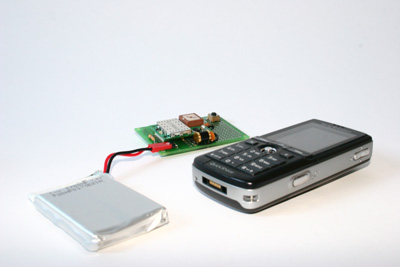by Pär Hansson and Olov Ståhl
Wide-area wireless sensor/actuator networks can be used across a broad range of application domains. Within the Integrated Project on Pervasive Gaming (IPerG), we use these types of systems to establish a computer-supported citywide role-playing game. SICS develops one such platform, with research spanning such areas as wireless sensor/actuator hardware platforms, distribution software platforms, configuration software, and tools for user-created content.
IPerG is an EU-FP6 project on Pervasive Gaming - games that integrate the technical approaches of computer gaming with emerging interface, wireless and positioning technology to create game experiences that combine both virtual and physical game elements. IPerG researches technical, design and business aspects of pervasive games. Whereas the player of a 'regular game' can participate in a game only at certain places and times, pervasive games expand the boundaries spatially (eg playing on the streets, across the globe, use of positioning), temporally (eg interlacing gaming with everyday life), and socially (eg non-players can be invited, players can produce content).

The project's infrastructure research theme is focused on identifying the requirements that pervasive gaming puts on supporting technology such as devices, software platforms and networks. One aspect that makes pervasive games different from traditional PC- or console-based games is that the players are often required to move around in the physical environment. This has several implications for the design of software platforms that support such games, and often means that techniques and principles used to achieve today's computer-based multiplayer games need to be modified or cannot be used at all. PC- and console-based multiplayer games typically assume a networking environment where connections are stable and latencies are low or moderate. This is different from many pervasive games, in which players are mobile and the use of radio-based communication means that the risk of high latencies and frequent disconnections cannot be neglected. One of the aims of the IPerG project is to develop platforms that are adapted to the specific characteristics of pervasive games, including:
- frequent disconnection: devices will often move in and out of connection
- mobile players: players move about forming ad-hoc arrangements of devices
- lightweight: must be able to run on low powered devices, especially phones
- heterogeneous: needs to run over multiple networks including WLAN, GSM/GPRS/3G and Bluetooth
- sensors/actuators: use of sensor or actuator hardware, for instance as part of purpose-built game props.
One of the platforms developed by SICS within IPerG is called PART (Pervasive Applications RunTime). A typical PART game session consists of a number of handheld or embedded devices, eg mobile phones or microcontrollers, which are connected to some sensor or actuator hardware. On each such device runs a PART process, which is an application that has been built using the PART middleware. These processes are in turn connected to each other, network-wise, via point-to-point connections, which allow them to communicate and exchange data using the PART protocol. Such network connections can be set up in an ad-hoc fashion, since PART does not dictate any particular connection topology (eg a star shaped client-server topology). Furthermore, it supports several communication protocols such as tcp, http, and btspp. In addition, PART also provides support for distributed objects, which can be used to represent a game state that needs to be shared and synchronized among a set of game processes.
A PART process that connects to some sensor hardware will typically create a distributed object representing this sensor. The process will also dynamically add properties to this object, representing different types of sensor readings (eg temperature and humidity). In a similar way, hardware that controls actuators such as, for example, a light switch, can be represented by distributed objects and properties. One of the key features of the PART object model is that objects created by one process can be discovered and accessed by other processes. This allows remote processes to read or set the values of properties of such objects, providing access to the hardware they represent.

IPerG has implemented and demonstrated its results in a number of showcase games. These include Live-Action Role Playing games and Location-based games, both of which have been focused around ubiquitous computing concepts for interacting with the physical world. Game technology setup is centred around players roaming around a city, carrying a mobile phone and any number of extra devices, all highly connected to players of the same game.
Typically these 'ubicomp' games are not played on the mobile screen; rather, they emphasize real-world interaction through other means and employ the phone as a communication node running the PART process. Extra devices, carried or placed in the environment, are automatically discovered using Bluetooth and then become part of the gaming experience. Support for devices is easily extensible and ranges from custom-built modular hardware that can be fitted with arbitrary sensors/actuators (eg touch, light, temperature, vibration, audio, RFID etc) to off-the-shelf units such as GPS.
The partners in the IPerG project are SICS, the Interactive Institute and Gotland University in Sweden, Nokia Research and the University of Tampere in Finland, the University of Nottingham and Blast Theory in Great Britain, and the Fraunhofer Institute and Sony Europe in Germany. The project has been running since September 2004 and will continue until February 2008.
Links:
http://part.sourceforge.net/
http://pimp.sourceforge.net/
http://www.pervasive-gaming.org/
http://prosopopeia.se/
Please contact:
Pär Hansson, SICS, Sweden
Tel: +46 8 633 1575
E-mail: par![]() sics.se
sics.se










